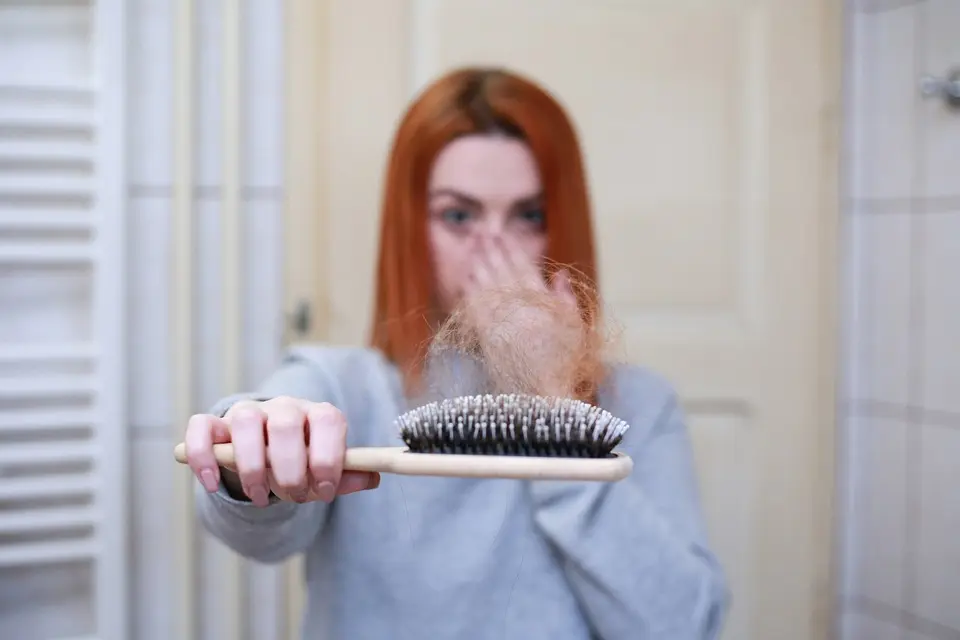Hair loss is a common complaint that is a manifestation of a wide variety of disorders. Classic male pattern hair loss or patchy hair loss due to alopecia areata can be challenging.
The human scalp contains approximately 100,000 to 150,000 hair follicles. Each hair follicle sits above a dermal papilla, a collection of mesenchymal tissue with inductive properties. The dermal papilla induces the development of hair follicles in the fetus and has an important role in follicular cycling and hair growth.
Hair follicles consist of four segments: the bulb, suprabulbar region, isthmus and the infundibulum. The bulb, the lowest portion of the hair follicle, is the site of the hair matrix, a group of rapidly proliferating keratinocytes responsible for the production of the hair. The suprabulbar region of the follicle extends from the bulb to the isthmus, which is the portion of the follicle between the insertion of the arrector pili muscle and the insertion of the sebaceous gland. The uppermost portion of the follicle, the infundibulum, extends from the insertion of the sebaceous gland to the intrafollicular epithelium.
A region near the insertion of the arrector pili muscle, referred to as the “bulge” region of the hair follicle has been identified as a site that harbors hair follicle stem cells that are essential for follicular cycling and hair growth. The loss of the hair follicle stem cells in the bulge is postulated to contribute to permanent loss of hair to alopecia.
Two major types of hair follicles on the human body are the terminal hair follicles and vellus hair follicles. Terminal hair follicles are larger than the vellus hair follicles and extend into the subcutaneous fat (2-5 mm from the skin surface) during hair growth. In contrast, the vellus hair follicles generally extend only into the reticular dermis.
At birth, terminal hairs are found on the scalp, eyebrows, and eyelashes and vellus hair populate the remaining hair bearing areas. During puberty, vellus hairs in certain areas such as the genital area and axilla are stimulated to become terminal hairs. Transitioning between terminal and vellus hair follicles may also occur in pathologic states. Abnormal transition of the vellus hairs to terminal hairs occurs in hirsutism in women, and transitioning of terminal hairs to vellus hairs (follicular miniaturization) is a classic feature of androgenic alopecia.
The Hair Cycle:
Once formed, hair follicles undergo lifelong cycling characterized by periods of growth (anagen), transformation (catagen), and rest (telogen). In human hair, cycling is not synchronous, meaning that individual follicles cycle independently preventing en masse shedding of hair. Although the lower portion of the hair follicle undergoes growth and regression during cycling, the isthmus and infundibulum remain stable. At any given time, approximately 90 percent of scalp hair follicles are in the anagen phase. The rate of hair growth and the duration of the anagen vary with the type of hair and location. On the scalp, the growth rate of terminal hair is approximately 0.3 mm per day and the duration of the anagen ranges from two to six years. In contrast, eyebrow hair grows only at a rate of 0.1 mm per day and has an anagen phase of two to three months. The abbreviated anagen phase accounts for the relatively short maximum length of eyebrow hair. Similarly, a short anagen phase is responsive for the short maximum length of vellus hair. During catagen, the lower portion of the hair follicle regresses and hair production ceases. The deepest part to the hair follicle tracts upward toward the isthmus. The duration of the scalp is usually around three weeks, less than 1 percent of hair follicles on the scalp are in catagen. Telogen is the resting phase, follows catagen, and lasts for two to three months on the scalp. Normally up to 10 percent of scalp follicles are in telogen. Telogen is characterized by the presence of a club hair that is ready for shedding from the hair follicle. Normally 50-150 telogen hairs are shed per day. Anagen follows telogen phase, resulting in the production of new hair.
Often medications, specifically amiodarone, lithium, propranolol, valproic acid, can lead to nonscarring hair loss. Poor diet, calorie and protein restriction as well as major illness, psychological stress, significant weight loss, chronic iron deficiency, thyroid disorders and childbirth have all been known to cause hair loss.
If you have concerns about your hair, we welcome you to schedule a complimentary consultation. Providing your pattern and timeline of hair loss as well as family and personal medical history during your appointment is helpful. Additionally, we offer corresponding supplements and can discuss prescriptions that can be used to help your condition.


